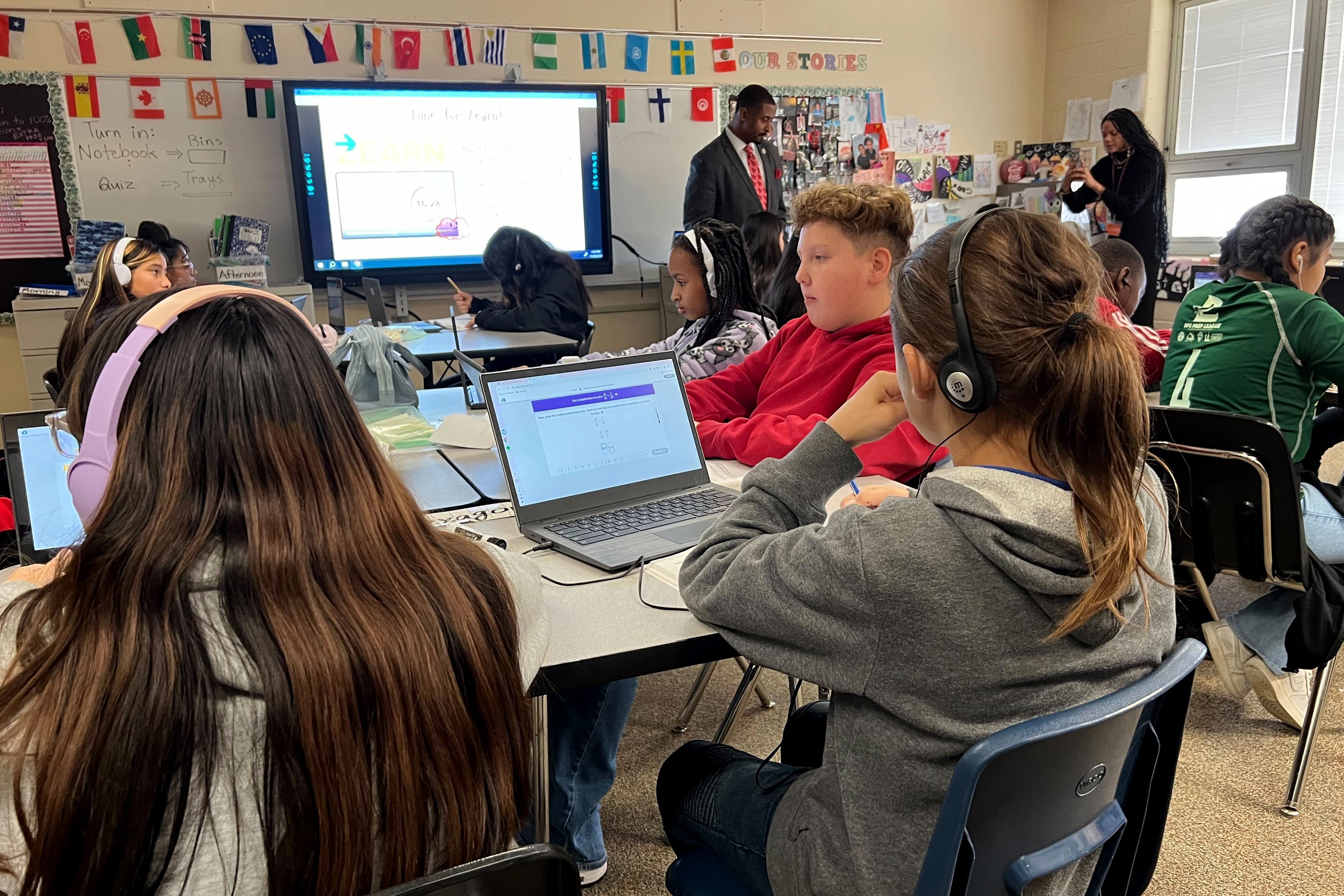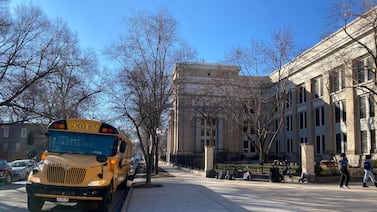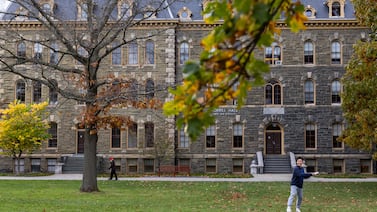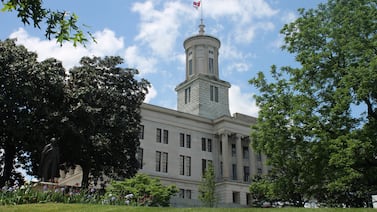Sign up for Chalkbeat Colorado’s free daily newsletter to get the latest reporting from us, plus curated news from other Colorado outlets, delivered to your inbox.
Colorado would significantly boost funding to rural districts and to those serving large numbers of students in poverty and English learners under a school funding overhaul unveiled Thursday.
Supporters of House Bill 1448 hope it sends more money to the students who need it most — and that the extra money will eventually improve student achievement.
“Our job is to make sure that we are delivering state funding in a way that ensures the kids with the greatest needs are getting the greatest help,” said Speaker of the House Julie McCluskie, a bill sponsor, during a Thursday news conference.
The effort comes after years of debate about the best way to rewrite a 30-year-old school funding formula. Education advocates and school leaders widely agreed the formula was outdated and unfair. But changing it was politically challenging because no district wanted to get less so that others could get more.
Supporters hope this bill will overcome those hurdles by using $500 million in new money to phase in the formula over six years — or about $83 million a year. Colorado is finally funding education according to state constitutional requirements after years of underpayment. McCluskie said increases in local property tax revenue and declining enrollment have relieved pressure on the state budget, and she feels confident the state can pay for the changes over time.
The new funds means no district will get less than what it does under the current formula.
The bill has the backing of a diverse coalition of superintendents and is sponsored by leadership from both parties.
In addition to McCluskie, a Democrat, lawmakers backing the bill include Senate Minority Leader Paul Lundeen, a Monument Republican and longtime player in school finance debates; Sen. Rachel Zenzinger, vice chair of the Joint Budget Committee; and Assistant Majority Leader Jennifer Bacon, who previously served on the Denver school board.
Still, the bill faces a tight timeline for approval — the session ends May 8 — and questions about sustainability.
Bret Miles, executive director of the Colorado Association of School Executives, which represents superintendents across the state, said his membership will dissect the bill, ask questions, and raise any concerns. CASE is a powerful interest group at the Capitol and has put the brakes on past efforts to rewrite the formula.
“There is a possibility, as a really diverse group of districts statewide, that we don’t come together with one position on all of this,” Miles said “This is that big and that complex.”
New formula aims to focus on student needs
The bill closely follows a framework recommended by a 17-member task force in February. The group wanted to provide more for districts serving students with greater needs, districts with low property wealth, and districts that are small or rural.
Currently, Colorado sets a base per-pupil funding amount. Then it uses factors such as district size, cost of living, and the number of students living in poverty as weights to determine actual per-pupil funding for each district.
Colorado also gives districts additional money on top of the formula for students with disabilities, those learning English, and gifted and talented students. But increases in funding for these categories of students hasn’t kept pace with increases in students needing extra services.
Traditionally, cost of living has accounted for a disproportionate share of school funding — $1.3 billion this school year, compared with just $482 million for students living in poverty. That’s out of roughly $9 billion in total state education funding.
The new formula aims to put more money toward student needs and less toward cost of living. And in allocating per-student funding, it creates weighted factors not just for students living in poverty, but also for English learners and students with disabilities.
Districts would get 25% more for each student with one of those characteristics. If a student meets two or three criteria, districts would get more money for each criteria.
Under the bill, smaller and rural districts would also get extra funding based on their location and size.
Under the proposed “locale factor,” districts classified as remote would get the most extra funding, up to 25% more based on their location. Suburban and city districts would not get any extra money under the locale factor. The “size factor” would be based on a district’s enrollment. Only districts with fewer than 6,500 students would get additional money — about 85% of Colorado’s school districts.
Districts with a higher cost of living, as determined by a state formula, would continue to get additional funding like they have in the current formula. The proposal would cap how much districts could get under the cost of living factor to leave more money for student factors. The cap in the bill is higher than recommended by the task force, potentially reducing opposition from more affluent districts.
Colorado’s public school finance bill — a different bill than the proposed overhaul — calls for per-pupil funding to increase to $11,450 in the 2024-25 school year. In 2023-24, per-pupil funding is $10,614.
A legislative analysis of how the proposal would impact Colorado districts in the 2025-26 school year found that Denver Public Schools would get $165 more per pupil than what it’s projected to get under the current formula, while its suburban neighbor Jeffco Public Schools would get $146 more.
Adams 14, which serves a high-poverty community with many English learners, would get an additional $463 per student. High-poverty rural districts such as Rocky Ford and Center would see similar increases. Douglas County, an affluent suburban district, would see $85 more per student.
“At the end of the day, if we ask the question, ‘Does this help or does this harm student achievement?’ I think we’ll come up with the right answer,” said Lundeen, the Senate’s minority leader. “And I think this formula is on the right pathway to helping student achievement.”
Funding bill gets early support, but questions remain
Behind the scenes, McCluskie received support this week for the proposal from several superintendents, including Greeley School District 6 Superintendent Deirdre Pilch, who was in attendance of the Thursday news conference announcing the bill.
In a Tuesday letter, the group of 36 superintendents told McCluskie that the rewrite shouldn’t be delayed and urged lawmakers to take action this year — despite several ongoing studies related to school funding.
The superintendents who signed that letter include those for Denver Public Schools, Mapleton Public Schools, and Colorado Springs School District D11. It also included numerous rural district leaders such as those in Alamosa, Wiggins, and Summit. None of the schools would stand to lose money over time within the recommendations.
“We must not allow more generations of students to pass through our schools without addressing the glaring inequities in this outdated formula,” the superintendents said in the letter.
Pilch said the money would greatly benefit the Greeley district because it educates many students from low-income backgrounds and those who are learning English. The extra money allocated through the new formula would allow Greeley and rural districts to offer extended learning, health services, family services, food pantries, laundry facilities, and parenting education classes that help adults learn English and support their kids, she said.
“We’re long overdue for a change in school finance,” she said. “We have an opportunity because of the courage of our state legislature.”
Members of the task force that released recommendations in February also praised the effort.
“I would hope that we can come to agreement that this is an important investment to be making for kids,” said Brenda Dickhoner, CEO of conservative education advocacy group Ready Colorado.
Riley Kitts, Democrats for Education Reform state director, said Colorado needs a formula “that is rooted in modern data and rooted in modern policy.”
Still, widespread support for the measure isn’t guaranteed. Miles, of the school executives association, said he expects many other members will want to know specifics of the bill and how they affect their students.
Lawmakers should evaluate the numbers closely to understand if the proposal provides money for districts with more students with higher needs like they want, said Tracie Rainey, Colorado School Finance Project executive director.
And she wants to see how the state will fund the increase after underfunding schools for years. To increase school funding for next year and get rid of an annual withholding known as the budget stabilization factor, lawmakers have had to dip into education reserves.
“I think that the question now is: Do the numbers play out to represent the policy objectives that they have outlined in this bill?” Rainey said.
Chalkbeat Colorado Bureau Chief Melanie Asmar and National Editor Erica Meltzer contributed.
Jason Gonzales is a reporter covering higher education and the Colorado legislature. Chalkbeat Colorado partners with Open Campus on higher education coverage. Contact Jason at jgonzales@chalkbeat.org.







